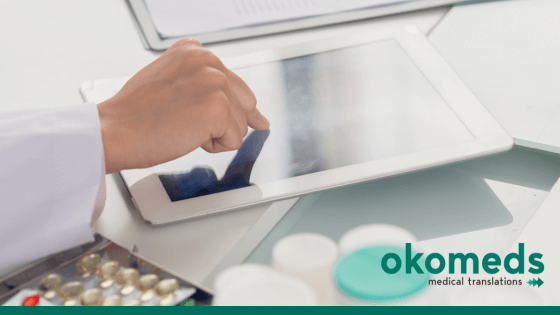
10 Apr EU electronic prescriptions: do you still need a translation?
Travelling can mean extra hassle for people on prescription medication. However, EU electronic prescriptions make it much easier to move around the European Union and obtain medicines prescribed in one of these countries.
Can electronic prescriptions be used abroad?
In the European Union, the electronic prescription system means that all prescriptions issued by a doctor in one member country are valid in all other EU countries. This technology allows doctors to issue prescriptions so that patients can obtain their medication in any pharmacy, regardless of which EU country they are in.
How is this done? When electronic prescriptions are issued, two documents are generated:
– Electronic prescription A: With the information for the patient, written in the language of the user.
– Electronic prescription B: With the same information in the languages available in the European Union.
However, there are some things you need to consider:
– Even if the ingredients have the same name, the medicine itself may have a different name.
– The pharmacist may not have the same medicine as the one you are taking, but they will dispense an equivalent.
– The pharmacist cannot dispense narcotic and psychotropic medicines, customized vaccines, pharmaceutical compounds, devices or therapeutic diet products.
– If you are travelling outside the European Union, the legislation may be different so you should check the regulations of the country you are visiting. Prescriptions are not always valid abroad, but sometimes translating them into the target language is enough to obtain the medication. The best way is to use medical translation services.
What are the key features of prescription translation?
Prescription translation requires specific expertise and a thorough knowledge of the names of the medicines and their instructions for use. This is necessary in order to be able to read and understand the doctor’s instructions. It also means the pharmacist can understand how to provide the appropriate treatment. In addition, data confidentiality is an important issue for the translator, who must not compromise the protection of this sensitive information.
If not done correctly, it can have serious consequences for patients and make it difficult for them to access healthcare.
To be valid in another country, a prescription must contain:
– Patient data.
– Issue date of the prescription.
– Details of the doctor.
– Details of the medicine: its common name, its pharmaceutical form (to be issued as a tablet, liquid, etc.), the quantity, the dosage and the dosing times.
With this information, pharmacists ensure that they dispense the right medicines, in the right quantity.







Sorry, the comment form is closed at this time.